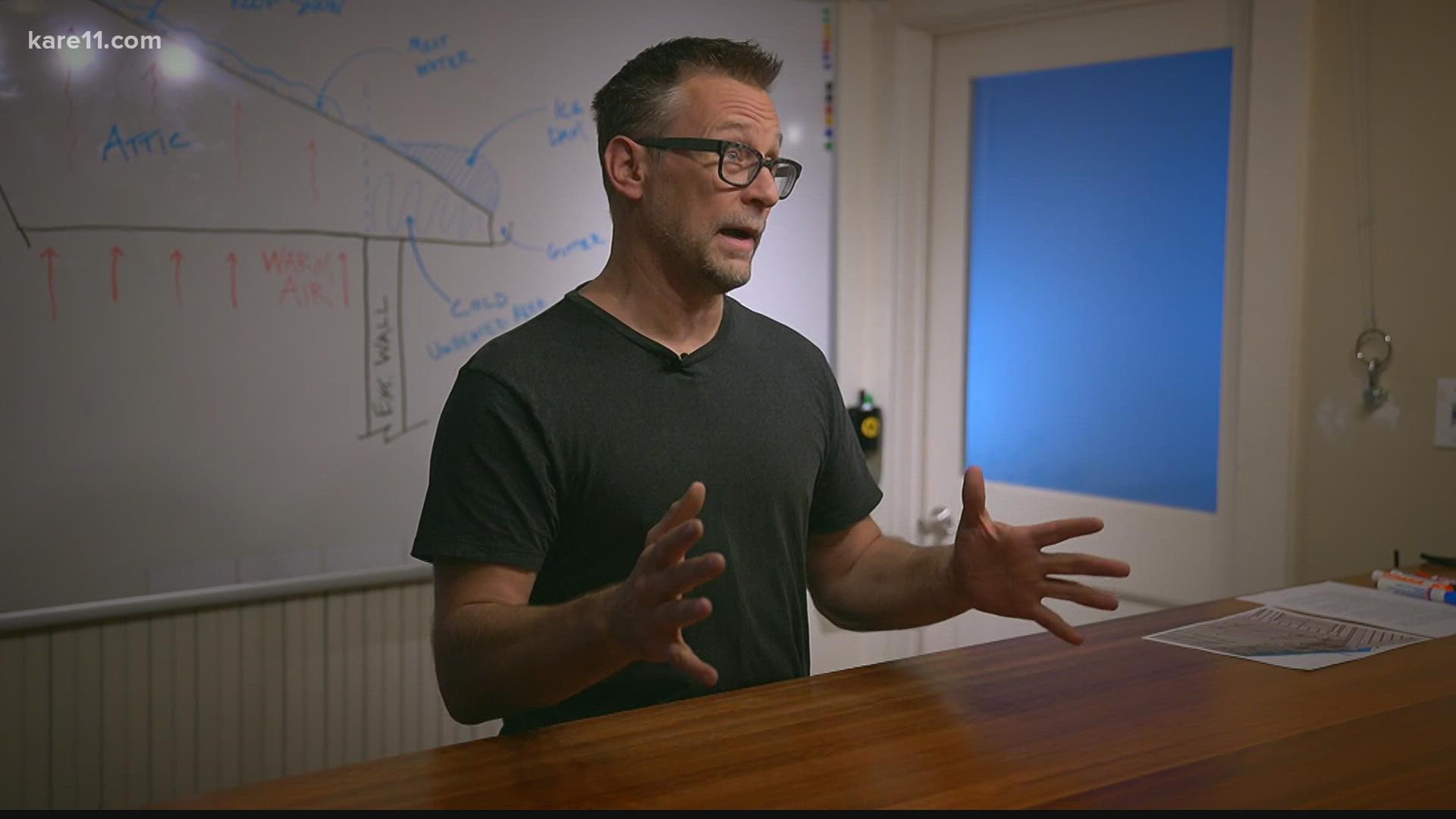MINNEAPOLIS — As another cold blast hits Minnesota, Steve Kuhl with Kuhl Design + Build says there's something every homeowner should look out for.
"Ice dams are a phenomenon that often happen in areas where there's a big differential between heat and cold on a roof line," he said.
It's most often caused by the freeze-thaw combination normally seen during the winter months.
"Any homeowner can look at this illustration and say, 'I can see ice coming down the exterior of the wall.' That is an ice dam 911. That means you have a serious problem," he said.
Kuhl has spent close to three decades building and designing homes.
He says an ice dam inevitably leads to water leaking into a home, causing damage to walls, ceilings, and insulation.
"You got warm air that penetrates the attic, it's going to melt snow on the roof, and the roof snow is the fuel that powers ice dams," he said. "One of the main dangers is that you get water into your building system, and usually it manifests into a water spot, ceiling, water cavities and where it is most damaging is where you can't see it," he said.
Experts say moisture entering the home from ice dams can lead to the growth of mold and mildew, causing respiratory problems. The Minnesota Department of Commerce says ice dams are fueled by inadequate air sealing inside the home that allows warm, moist air to escape into the attic.
"We need more snow to make them to be a more widespread problem," said Kuhl.
He says while his business will probably receive more calls for ice dam concerns, when there's heavier snowfall, experts say it's important for homeowners to recognize the signs of an ice dam and know when it's necessary to take action.
"The first piece of advice I have for homeowners is to do a little bit of research before you freak out," said Kuhl.
For more information on how to prevent ice dams, visit the website here.
Watch more local news:
Watch the latest local news from the Twin Cities in our YouTube playlist:

